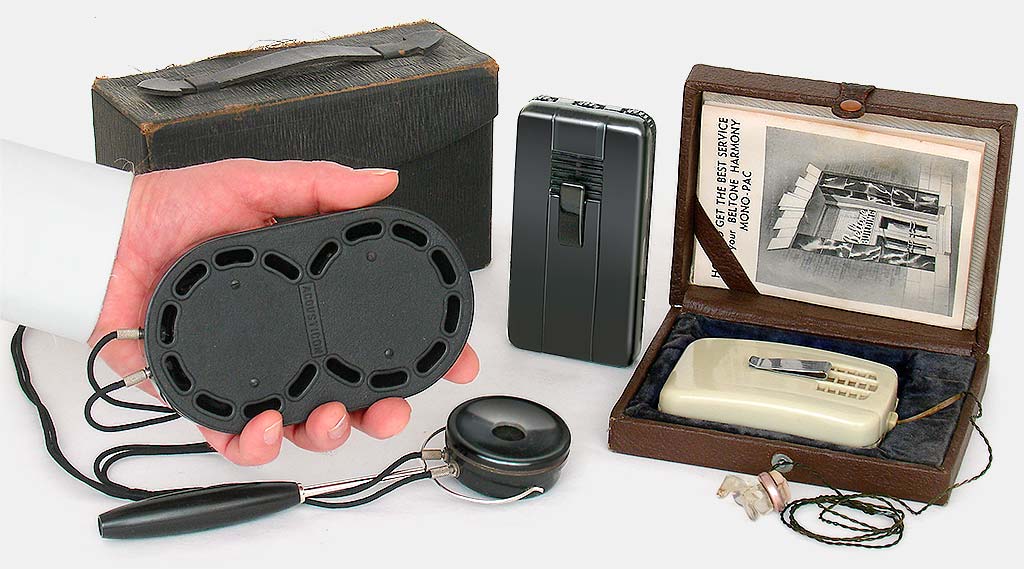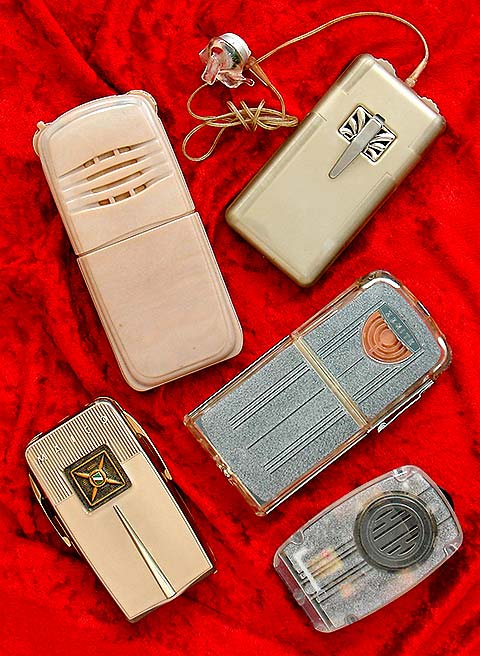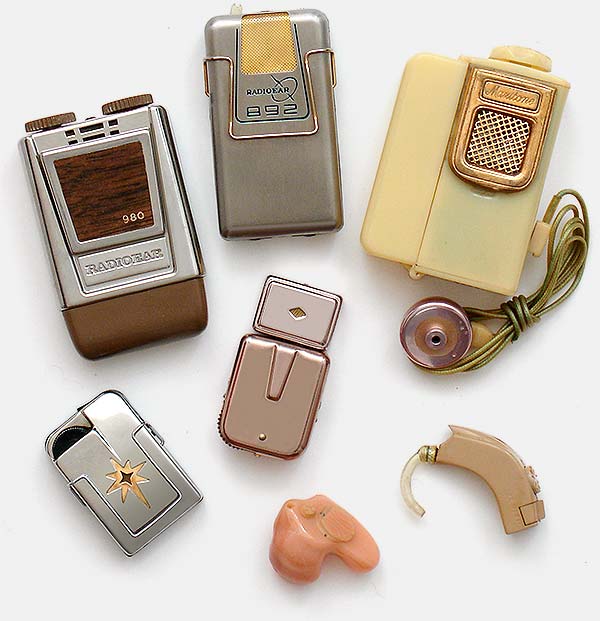
Hearing Aids


I started accumulating hearing aids because they looked like little radios. Before long, I had yet another collection going.
The first ‘electrical’ hearing aids began to appear in the early 1900s. (Before that, ear trumpets and the like were all people had to assist hearing.) These early electrical aids are known as ‘carbon-type’ hearing aids for their use of carbon microphones, the same type microphones that were in early telephones. Carbon microphones were, in fact, used in telephones well into the 1970s. As you can see in the Acousticon Model SRD (1910, USA) above, these hearing aids were large affairs. What you see held in the hand is just the microphone part. They also required separate batteries (not shown) that were heavy and expensive.

Amplification was greatly improved with the introduction of vacuum tubes to hearing aids in the 1920s and 1930s. We now think of this as the transition from ‘electrical’ to ‘electronic.’ The black Western Electric 125 “Ortho-Tronic” (1940, USA) shown top center could fit in a pocket but still required a separate battery pack.
As technologies progressed, both the devices and the batteries required got smaller, eventually allowing a pocket-size hearing aid with self-contained batteries. The early 1950s brought transistors to hearing aids, allowing still smaller devices with single, smaller batteries. By 1956 hearing aids small enough to sit up behind the ear were introduced, and in-ear aids appeared in the 1960s.
The hearing aid shown top right is the Beltone Mono-Pac (1947, USA), one of the first with onboard batteries. These pocket sized models used subminiature tubes, generally three of them.

Upper left in the photo on the red velvet is the Sonotone 700 (1946, USA) and below that a very attractive underpainted gold Maico (1949, USA). Upper right with earphone shown is an Otarion E4 (1946, USA). Below that the clear-cased(!) Zenith 75 (1947, USA) and below that another clear-case model, the Acousticon A-55 (1945, USA). All in this group have self-contained batteries except the Acousticon.
In the next group, all are transistor hearing aids. Far left: Radioear 980 (1967, USA). To the right of it another Radioear, this one the 892 (1962, USA). In ivory with the earphone is a Maxitone about which little is known. Lower left is the tiny chrome Audivox Petite (1956, USA). This one says on its back “Audivox, Successor to Western Electric Hearing Aid Div.” The little pocket model in the middle with the protruding, plug-in microphone is the Zenith Crest (1956, USA). The behind-the-ear aid in the lower right of this group is a Zenith (c.1970, USA) and the in-ear aid is a Phonak (c.1990, USA).
©Copyright 2008-2020 ericwrobbel.com. All rights reserved.